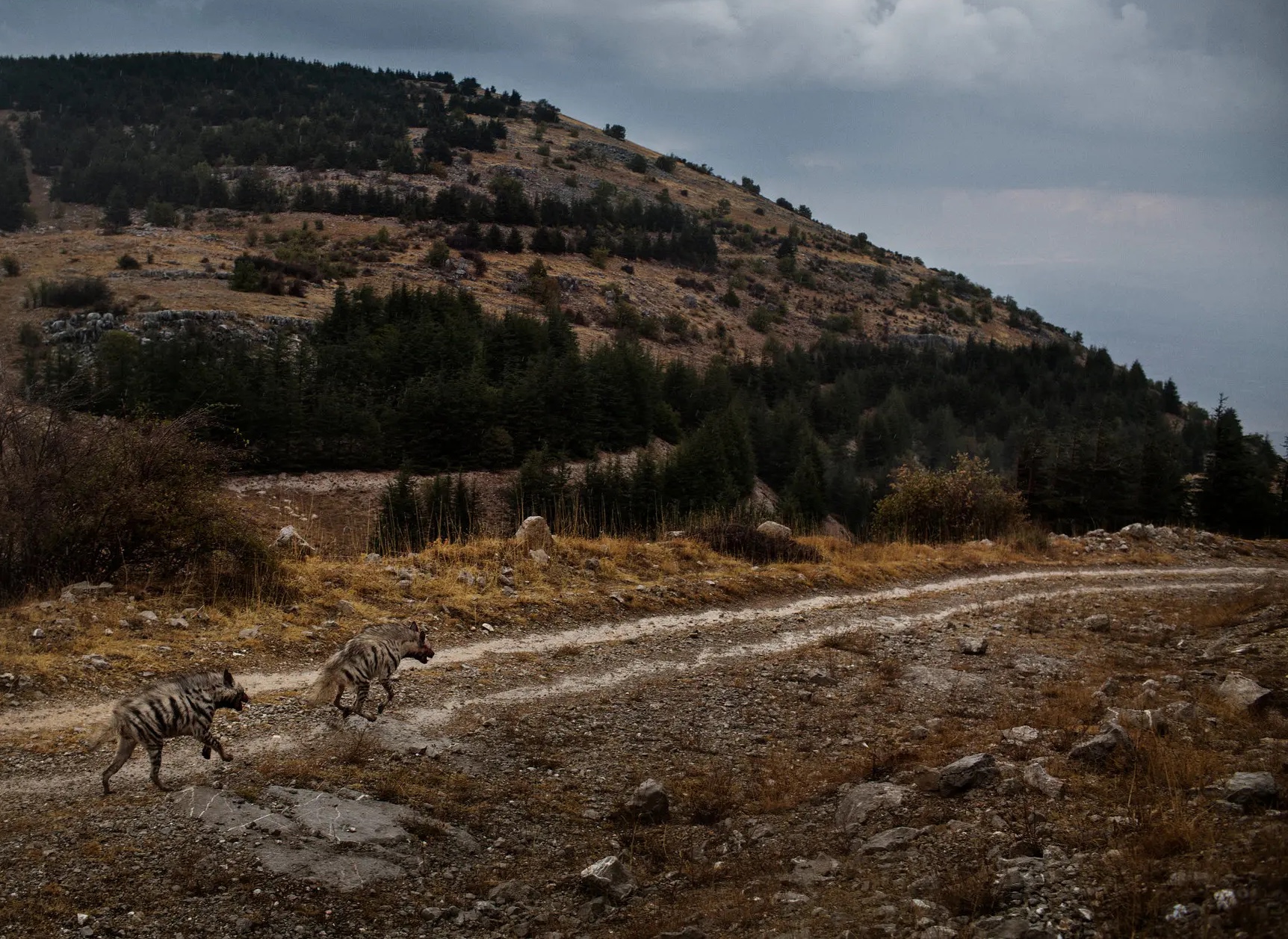يعيش في بيئات مختلفة مثل السهول والوديان والجبال والكهوف والمناطق الجافة. يتميز الضبع بكبر الرأس، وطول القائمين الأماميين مقارنة بالخلفيين. يتراوح طول جسمه بين 90 و120 سم، ويصل طول ذيله حوالي 30 سم، ويزن بين 27 و54 كجم. يغطي الجسم شعر خشن ابيض اللون أو اصفر مائل الى البني الترابي، تتخلله خطوط عريضة بنية تميل إلى السواد. ويلاحظ على رقبته عرف من الشعر يصل طوله الى 30 سم. متحرك يرتفع عاليا في حالة الذعر. القوائم الأمامية والخلفية ينتهي كل منها بأربع أصابع. ويمكن تمييز آثار أقدامه على الأرض عن غيره من الحيوانات، إذ أن آثار الأمامية اكبر من الخلفية. وللضبع طبقة جلدية او ما يشبه الجيب تقع تحت الذيل تخفي الأعضاء التناسلية.
يعيش عادة بشكل انفرادي، ويقضي معظم ساعات النهار مختبئاً في الكهوف المنعزلة والحفر على ضفاف الأنهر او بين الصخور، وهي الأماكن المفضلة لديه. لا يشاهد في المناطق التي يزيد ارتفاعها على 1500م عن سطح البحر. يهاجم الحيوانات الضعيفة التي لا تستطيع أن تدافع عن نفسها، وبخاصة الصغيرة منها والمريضة والمتقدمة في السن، وهو نادراً ما يقاتل. وعند تعرضه لهجوم يلتفّ على نفسه ويرفع شعر عرف رقبته تحسباً. وكثيرة هي الحالات التي يهاجم فيها ولا يُظهر أي محاولة للدفاع عن نفسه. يصاب الضبع بداء الكَلَب، ولكنه لا يهاجم كما يفعل الكلب.
تحمل أنثى الضبع لمدة ثلاثة اشهر، وتضع من 2 الى 6 صغار، يسمى الواحد منها الفرعل. تعتني الأم بالصغار وترعاها في حفرة ترابية او داخل مغارة. يعمّر الضبع قرابة 24 سنة في الأسر، ونحو 12 سنة في البراري.
يعتمد الضبع في غذائه على الجيف وبقايا الطعام والنفايات. وعند افتراسه لإحدى الطرائد فإنه يلتهمها مع العظام والشعر لدرجة انه قد يكسر جمجمته ليبتلعها بحيث لا يخلّف وراءه أي اثر لهذا الحيوان.

Striped Hyenas inhabit various environments such as plains, valleys, mountains and arid areas.Its large head and its front legs being longer than the rear ones characterize it. This hyaena’s body length 90 -120 cm, its tail is about 30 cm and weighs 27- 54 kg. The striped hyena has a coat of coarse hair that is white or yellow, inclined to an earthy brown color and interspersed with blackish brown stripes. On its neck it has a mane of hair 30cm long, which stands on end when alarmed. Its front and rear paws each have four toes. The footprints of the hyena are easily identifiable because the front paws are larger than the rear ones. The hyena has an extra layer of skin layer resembling a pouch under its tail which hides its reproductive organs.It passes the day hiding in remote caves, in holes on riverbanks or among rocks. It is not found in areas over 1500m above sea level. Unlike the African hyena it rarely fights. When facing an attacker it tenses its body and raises the hair of its mane in apprehension. Quite often, when the hyena is attacked it does not attempt to defend itself but turns away. It can catch rabies but, unlike dogs, it does not attack others when afflicted with this disease. After a gestation period of three months the female gives birth to between two and six cubs which it rears in a sandy hole or inside a cave. The life span of the striped hyena is about 24 years in captivity and 12 years in the wild.Hyenas attack animals that are unable to defend themselves, particularly the small, the sick and the old. The hyena usually feeds on carrion, food remains and other waste matter. But, if it does catch prey, it eats the flesh, bones and hair, even crushing the skull and swallowing it, thus leaving no trace of the animal it has devoured.

Comments are closed.